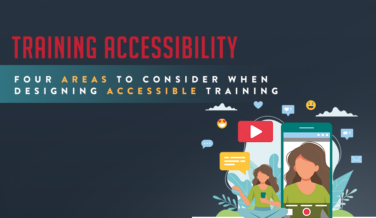Diversity & Inclusion In The Workplace
In today’s business landscape, organizations are making a great effort to have Diversity and Inclusion (D&I) present in their work environment. There are many distinctive characteristics that go into the four types of diversity which make it necessary for the presence of inclusion. Although diversity and inclusion are two different things, they do go hand-in-hand; without inclusion there would not be little to no accepted diversity in the workplace.
What is Diversity?
Diversity is the entire range of human differences including gender, sexual orientation, religion, age, ethnicity, race, geographical locations, culture, class, physical/mental disability/etc.
Having diversity in the workplace means an organization is made up of people with differences from those listed above.
Different Types of Diversity in the Workplace
Diversity is extremely broad, and, in the workplace, you will see four different types of diversity with their own characteristics. The types are:
- Internal Diversity: These characteristics are ones that individuals are born with and cannot change (race, ethnicity, age, culture, origin).
- External Diversity: These characteristics are ones that individuals possess but are NOT born with (skills, religion, education, location, marital status, economic status, etc.).
- Organizational Diversity: These are differences that occur in the workforce (location, departments, levels, duties, etc.).
- World View Diversity: Theses are differences on how individuals view and relate to the world and the events that occur (politics, history, culture).
What is Inclusion?
Inclusion is the accomplishment of a working environment that treats everyone fairly and equally and provides each individual with the same opportunities and resources to contribute to the organization.
Having inclusion in the workplace means each individual feels included, valued, heard, appreciated, and respected.
Benefits of Diversity and Inclusion in the Workplace
- Increased employee engagement: When an employee feels valued and appreciated, their participation and engagement within their organization will increase.
- New and improved innovations: When people from diverse backgrounds come together it allows for a chance to explore latest ideas and develop solutions to previous problems.
- Higher profits/revenue: These increases come from a combination of retention, engagement, innovation, and opportunities.
- Boost in confidence and morale: An employee who feels confident and comfortable in their position will be willing to contribute more and will produce more for the organization.
- Lowered employee turnover: Having an organization that appreciates their employees and values their roles will encourage them to stay rather than look for something different or better.
- Positive environment: If a workplace has negative energy, no individual will want to stay. Experiencing a positive environment daily. Will give them the desire to work with the organization.
- Strengthened reputation: When employees are proud for the organization they work for, it will be shown and spoken about, thus increasing the positive reputation of the organization.
- Expands talent opportunities: With a reputable reputation other job seekers will be influenced to apply and be a part of a positive and supportive organization.
It can be complicated to continuously monitor an organizations diversity and inclusion success, so it is particularly important to have metrics and check-in dates in place. To measure the effectiveness of D&I consider measuring productivity, engagement, and morale among employees. Also, be aware of the four types of diversity and the characteristics for each and occasionally check off the ones that are present in your organization. If your organization does not check-off many diversity types, consider broadening your staff with others who are diverse from those already in your organization.
Ways to Improve D&I Effectiveness in the Workplace
-
Educate those in leadership positions on how to appropriately oversee diverse situation and how to include every employee and offer the same opportunities.
-
During the hiring process focus on diversity and the unique qualities and attribute of every candidate.
-
Apply “Culture Add” which is welcoming new voices and views rather than working on the culture that is already in place.
-
Foster and reliable communication between employees, management, departments, and others in the same working environment.
-
Continuously train and educate all employees on diversity and inclusion.
-
Provide supportive management for employees with new innovative ideas.
-
Create a process to monitor the metrics of training effectiveness.
The Importance of D&I in the Workplace
Employees are the backbone of every organization, and there would be no success or growth without a determined and positive team. Providing diversity in the workplace will give the organization more opportunities during the hiring process and will give their employees to learn and explore opportunities that they would not have been able to on their own. Creating a fair and equal environment will build rapport between managers and employees, establishing a bond that will retain both levels of positions. The benefits do not only apply to the organization and their reputation but trickle down to even the smallest sense of gratitude and appreciation in everyone. This creates an understanding and acceptance for everyone in and out of the office, therefore better the world with diversity and inclusion.
Continue reading

Dashe joins ttcInnovations
Learn More
Embracing the Future: Early Adopters of Generative AI for Learning
Learn More
Four Areas To Consider When Designing Accessible Training
Learn MoreCommitted to
finding solutions

